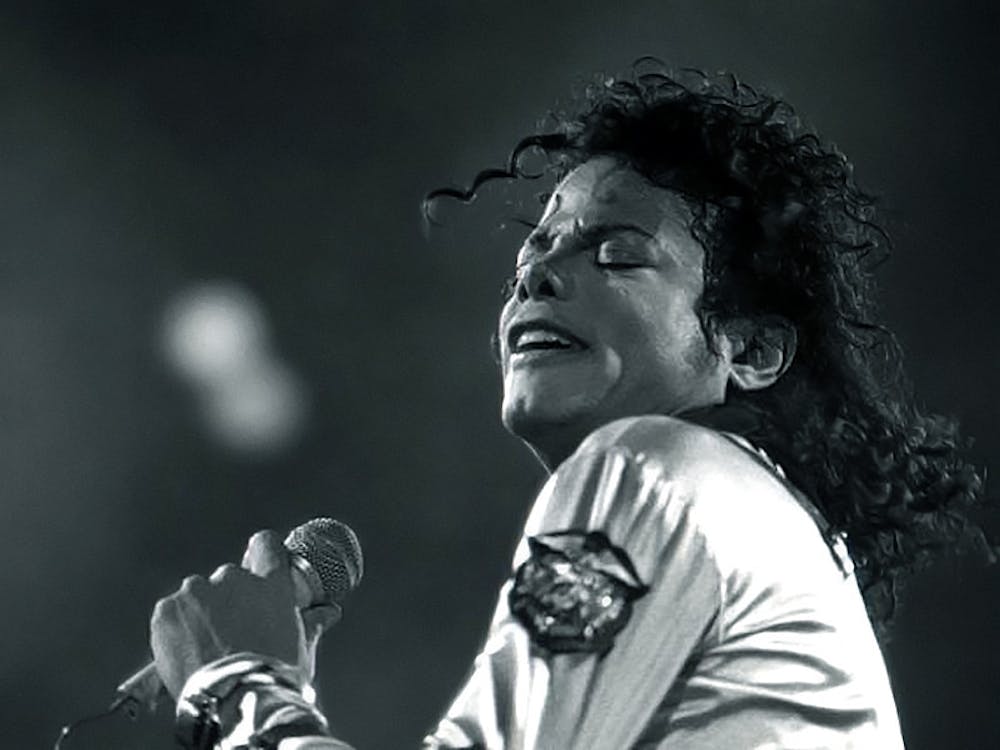Michael Jackson | Courtesy of Wikipedia Commons
1987 was a wonderful year for music. Not only was “Appetite For Destruction” by Guns N’ Roses, one of rock’s best debut albums, premiered to the public (which I covered in last week’s Retro Rewind), but a hotly-anticipated album by the King of Pop was as well.
Michael Jackson’s seventh studio album “Bad,” a follow-up to his 1982 album “Thriller,” was released on Aug. 31, 1987, and was supported by nine singles over two years. These include hits like “The Way You Make Me Feel,” “Smooth Criminal” and the title track.
Four years after its release, “Bad” became the second highest-selling album ever made (though that ranking soon diminished).
Is the album as good as “Thriller” or other popular Michael Jackson works? Which famous superstar was originally supposed to duet with Jackson on the opening track? Read on in this week’s Retro Rewind to find out.
The artist
One of the most notable entertainers of all time, Michael Jackson started his music career in 1964 as a member of the Jackson 5. He later began a career as a solo artist for Motown Records in 1971.

Releasing a total of ten studio albums, Jackson’s records have become pop culture staples. “Thriller,” for example, is the highest-selling album of all time with over 66 million copies sold.
In addition, the artist also earned 13 Billboard Hot 100 singles as a solo artist during his lifetime and was the first to have a song on the Billboard Hot 100 top ten in five different decades.
Tragically, Jackson passed away on June 25, 2019, from an overdose of propofol, and his physician at the time, Conrad Murray, was convicted of involuntary manslaughter for his death.
Jackson was inducted into the Rock and Roll Hall of Fame twice: as a member of the Jackson 5 in 1997, and as a solo artist in 2001. He was also inducted into the Songwriters Hall of Fame in 2002, and became the first recording artist to become a member of the Dance Hall of Fame in 2010.
The tracklist
The album gets off to a strong start with its namesake track: “Bad.” Originally intended as a duet between Jackson and Prince, the song was inspired by a story Jackson had read.
In his autobiography “Moonwalk,” the singer elaborated on the song’s meaning.
“‘Bad’ is a song about the street,” he explained. “It's about this kid from a bad neighborhood who gets to go away to a private school. He comes back to the old neighborhood when he's on a break from school and the kids from the neighborhood start giving him trouble. He sings, ‘I'm bad, you're bad, who's bad, who's the best?’ He's saying when you're strong and good, then you're bad.”
After “Bad” is “The Way You Make Me Feel,” a smoother R&B song. Jackson’s mother wanted him to write a tune in that genre with a shuffle rhythm for “Bad,” and that song was the final product.
Next up is “Speed Demon,” a funk rock song about driving at high speeds. “Liberian Girl” is about how grateful Jackson was for a loved one from Liberia, and the track was positively received in its namesake country.
“Just Good Friends” is a duet with Stevie Wonder where the two fight over a girl in a playful manner, but it’s honestly one of the low points of the album. Meanwhile, “Another Part of Me” sees Jackson discuss a need for love and unity across the globe.
“Man In The Mirror” is a rather introspective track, detailing Jackson’s commitment to change himself from the inside. It was co-written by Siedah Garrett, who duetted with Jackson on the following track “I Just Can’t Stop Loving You.”
“Dirty Diana” is a hard rock track in the vein of “Beat It” and contains lyrics about groupies. One of Jackson’s most well-known songs, “Smooth Criminal,” is next.
According to Rolling Stone, the track is "his best blend of R&B groove and rock edginess, and a turning point in his shift toward darker, harder-edged material." Finally, “Leave Me Alone” is a song about the paranoia that was written amidst numerous tabloid reports centered on the singer.
The production
Producer Quincy Jones worked with Jackson for the third and final time on “Bad.” He had previously produced “Off the Wall” and “Thriller.”
The crew began working on demos in November 1983, and Jackson spent much of 1985 to 1987 at his home studio in Encino, Calif. writing and recording the album.
Two groups of engineers, the A team at Westlake Studios and the B team at the Encino studio, worked together on “Bad.” According to Jones, the A team wouldn’t get a lot of sleep when they were on a productive streak. "They were carrying second engineers out on stretchers. I was smoking 180 cigarettes a day."
There were a few breaks in production. One was in 1984, when Jackson embarked on the Victory Tour with his family, and another occurred the following year, as Jackson had to prepare for “Captain EO,” a Disney science-fiction film he was starring in.
Resuming in August 1985, the crews worked for over a year until Jackson filmed the title track’s music video in November 1986. Two months later, they worked on the album once more, and it was finished in July 1987.
A total of 60 tracks were written by Jackson, and the singer had recorded half of them. He intended to use them all on a three-disc collection, but Jones mentioned that they should cut that down to a ten-track album.
Synthesizers were utilized extensively on the album; the singer had brought in sound designer Denny Jaeger to help produce sounds for “Dirty Diana” and “Smooth Criminal.” The production team also used drum programming to give the album its smooth and aggressive tone.
What critics thought of “Bad”
When “Bad” was released to the public in 1987, the album was positively received by critics. Rolling Stone’s Davitt Sigerson wrote that "even without a milestone recording like 'Billie Jean', ‘Bad’ is still a better record than ‘Thriller’."
He explained that songs like “Liberian Girl” and “Speed Demon” made for better filler and a richer experience overall than what he called “‘Thriller’s forgettables.”
Meanwhile, the Washington Post’s Richard Harrington explained that it’d be better to compare “Bad” with “Off The Wall,” as he felt it was difficult for Jackson to live up to expectations after the success of “Thriller.”
However, Harrington did state in his review that the album was "immaculately produced and with some scintillating vocal performances from Jackson". Edna Gundersen for USA Today mentioned that the album was Jackson’s "most polished effort to date," adding that it was "calculated but not sterile."
“Bad” became the first album in history to create five number-one singles. It won Album of the Year at the 1989 Billboard Music Awards, and also received a Grammy award for Best Engineered Recording-Non Classical.
On Rolling Stone’s list of the top 500 albums, “Bad” placed at number 202, and on NME’s list, it ranked at number 204. The album was included in the book “1001 Albums You Must Hear Before You Die.”
What I think of the album
Michael Jackson is, to me, one of those artists whose music can’t necessarily feel dated. His way of combining rock, pop, funk and R&B to create a signature sound has made his music iconic, and it doesn’t fade here.
I adore the aggressive tone featured in this album and how it contrasts with some of “Bad’"s mellower tracks like “Just Good Friends” and “Liberian Girl.” The sleeker production from Quincy Jones is top-notch, leading to some excellent instrumentals.
Jackson also had a knack for writing and singing catchy melodies, penning nine of the album’s tracks. That talent is on full display with this record, and all of those elements make “Bad” a very good record.












